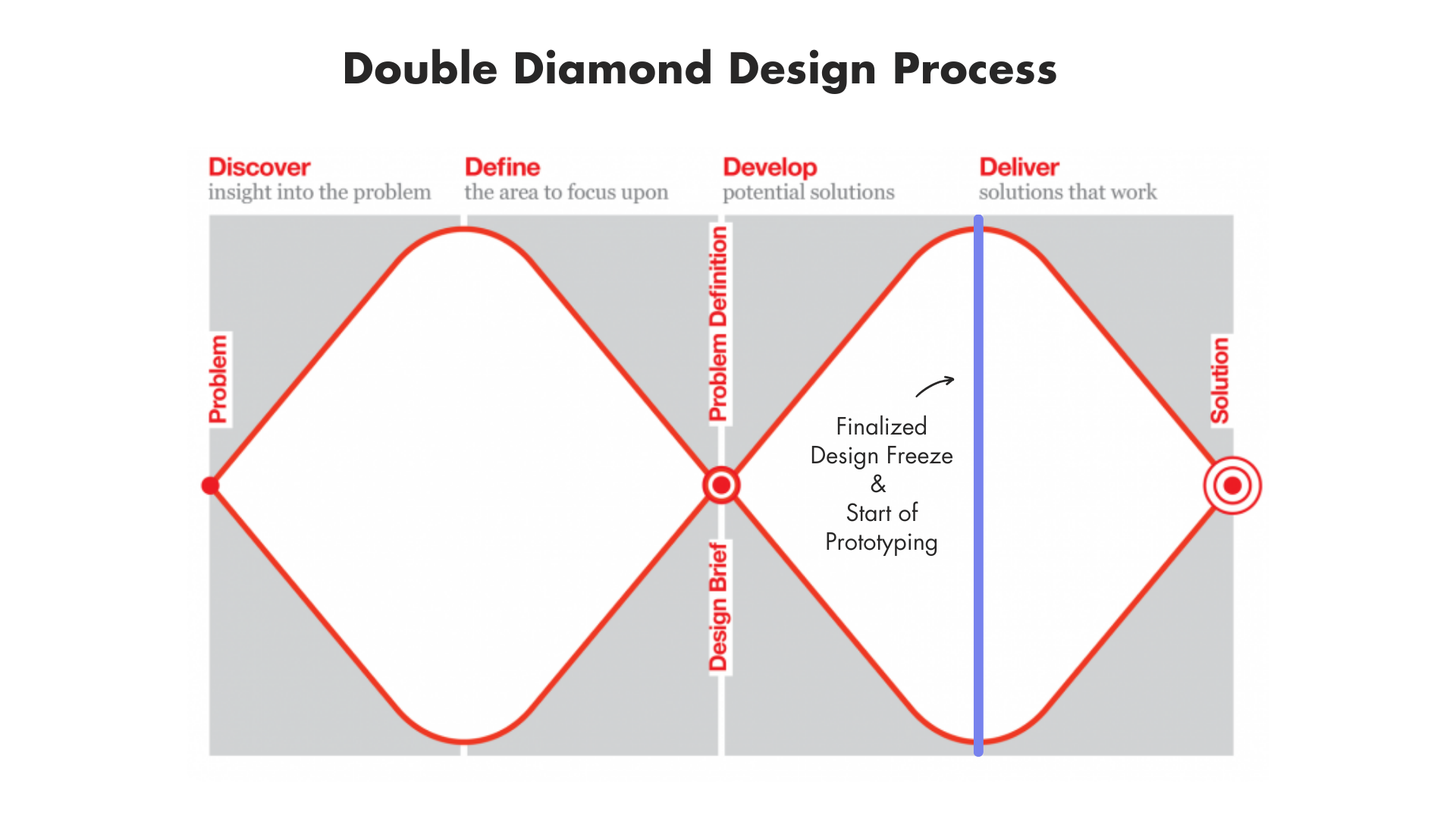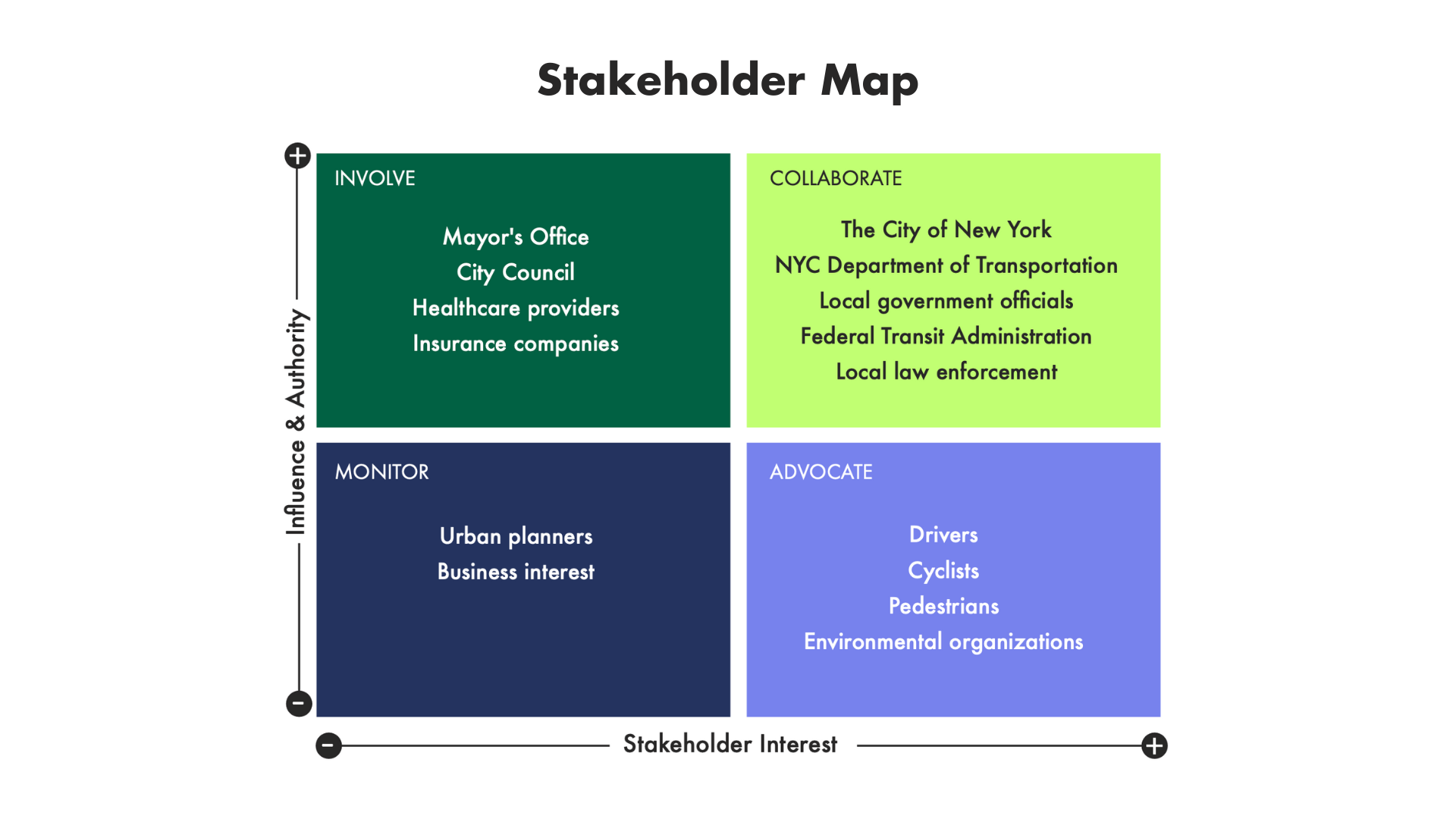Quote of the Week:
“In the middle of difficulty lies opportunity.“ – Albert Einstein
It is the end of April 2023 and we have less than a month left to finalize our project prior to presenting the work to fellow students and collaborative partners within the CBI program. Recent weeks have been filled with intensity, resulting in accelerated productivity. We have accomplished a great deal so far by narrowing down product details and features, sketching a solution idea, envisioning a possible future scenario, and even addressing climate change by making planet-friendly material choices. All the pieces seemed to be in place for a “design freeze,” although we still continued to re-evaluate the format of the traffic alerts that Auriel would communicate to people. Our working days got even longer, and the most memorable part of this period was seeing how our team’s efficiency stood out under pressure, combined with a constant stream of notifications on my phone whenever someone posted an update and the Aha! moments we had.
Double Diamond Process
After considering the final design decisions and clarifying the product framework for design freeze, our next step was to convert Auriel into a digital prototype. Throughout the course, we had followed the famous Double Diamond Design Process dividing our project into four distinct phases. The project was initiated by first exploring and discovering the challenge (first phase), leading to a refined definition of the problem area (second phase). The project continued by developing ideas for potential solutions (third phase), ending with delivering a solution that meets the project objectives (fourth phase). Up to this point, we had successfully completed the third design phase by defining the product features ready to be crafted into a prototype. Soon Auriel would be ready for implementation and be introduced to its stakeholders.

A diagram indicating our design process stage using The UK Design Council’s Double Diamond Design Process.

Dan Nessler’s Adaptation – Digital Experience Design.
Transforming Idea into a Prototype
Having intensively worked on the project for over 6 months, we couldn’t wait to start the final design phase. During the next couple of weeks, we would focus on turning Auriel into a tangible prototype by creating a 3D digital model that highlights the product’s features and illustrates its operational environment. Our goal was to develop a visual rendering of the prototype which could be showcased at the end of the course to different stakeholders, and above all a tool that allowed us to gather insightful feedback from users and project partners for further development.
Our team continued to iterate the prototyping stage and the preliminary versions underwent multiple modifications before reaching the final acceptable one. As usual, we aimed at polishing every little detail only realizing a more adaptive approach would be needed to conclude the project on time. Lowering our expectations of the product outcome quality tested our inner perfectionists due to having to make several compromises related to visioning Auriel’s physical structure. In the end, we continued with a prototype version that adequately fulfilled all project requirements and goals.
As the CBI program marked a first-ever product innovation and development project for all of our team members, we expected to face some practical challenges along the way. Since our team had no previous experience in using, for example, 3D rendering programs that are often used in industrial design, this acted as one of the limiting factors in transforming our idea into an accurate prototype. However, in design work, I believe the key is not how fluent designers are in using different programs, but rather in finding alternative ways if a problem cannot be solved in a certain way. Therefore, the lack of specific skills did not stop us from progressing but instead served as an inspiration to continue working to achieve results. After numerous rounds of iteration, creative thinking, and ingenuity, we managed to bring the first viable version of Auriel to life in a digital form.
The Role of the Implementation Plan
The project progressed quickly towards the final stages, during which our focus shifted to preparing an implementation plan for the product deployment, while also identifying potential stakeholders and their specific needs. Given the extensive geographical reach of Auriel’s network, we devised a three-part deployment strategy. Over the next decade, the product rollout would begin with a limited selection of New York City’s most dangerous intersections as mapped out by the Vision Zero program, continuing to gradually expand to cover the greater metropolitan area over the following decades. The implementation plan serves as Auriel’s navigation guide, outlining the essential procedures and undertakings required to evolve the product design concept into reality.
The Spectrum of Stakeholders
Throughout the CBI project, particularly while reaching the planet-centered design concept, we came to the realization that as designers our intention is not to invent solutions from scratch, but rather make use of existing elements that can lead us toward our objectives. The challenge of mitigating traffic accidents is undeniably complex and requires collaboration with diverse people to elicit diverse views and perspectives to effectively address such issues. To achieve this, we thought of stakeholders from multiple ranges whom we could cooperate with and help us achieve our goal of developing a product that has a positive impact on the local community. Auriel’s successful integration into urban streets will be based on the expectations and collaboration of various stakeholders, including street users as well as municipal and administrative bodies, all of whom have a significant impact on the various stages of Auriel’s implementation. Users can provide valuable feedback about a product’s operational effectiveness, which can reveal new user requirements; on the contrary, state bodies play a key role in enabling the implementation of projects, whether it is cooperation measures or means of financial support. To identify the most important stakeholders, we prepared a stakeholder map divided into separate categories emphasizing the importance of each category and measuring their level of influence and interest in relation to our project.

A Stakeholder Map illustrating levels of power and interest of separate stakeholder categories.
We have reached significant milestones over the past few weeks by reflecting on the complexity of the product development process and designing solutions for tackling concerns related to climate change. As April turned to May, a final surge of intensive work waited around the corner expecting us to tighten our work schedule to finalize project deliverables. The conceptual structure we had been working on had to be transformed into coherent text, visual representations, and materials for showcase, thereby keeping us occupied until the very end of the Challenge Based Innovation course.
References:
- UK Design Council’s Double Diamond Design Process: https://images.squarespace-cdn.com/content/55fa0341e4b06660c65bd4f0/1447216771316-EDGLXBYTA9VUB14TEFNS/?content-type=image%2Fpng
- Dan Nessler Adaptation – Digital Experience Design: https://medium.com/digital-experience-design/how-to-apply-a-design-thinking-hcd-ux-or-any-creative-process-from-scratch-b8786efbf812

Recent Comments